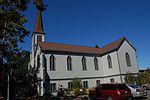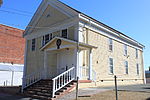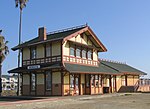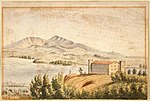Benicia Capitol State Historic Park
1935 establishments in CaliforniaBenicia, CaliforniaCalifornia Historical LandmarksCalifornia State Historic ParksFormer state capitols in the United States ... and 11 more
Government buildings completed in 1852Government buildings on the National Register of Historic Places in CaliforniaGreek Revival architecture in CaliforniaHistory museums in CaliforniaHistory of Solano County, CaliforniaLegislative buildingsMuseums in Solano County, CaliforniaNational Register of Historic Places in Solano County, CaliforniaPalladian Revival architecture in CaliforniaParks in Solano County, CaliforniaProtected areas established in 1935

Benicia Capitol State Historic Park is a state park in Benicia, California, United States. The park is dedicated to California's third capitol building, where the California State Legislature convened from February 3, 1853, to February 24, 1854, when they voted to move the state capital to Sacramento. It is the only pre-Sacramento capitol that remains. The park includes the Fischer-Hanlon House, an early Benicia building that was moved to the property and converted into a home in 1858, after the legislature departed. Benicia Capitol State Historic Park just off the city's main street also includes a carriage house, workers' quarters and sculptured gardens.
Excerpt from the Wikipedia article Benicia Capitol State Historic Park (License: CC BY-SA 3.0, Authors, Images).Benicia Capitol State Historic Park
East H Street,
Geographical coordinates (GPS) Address Nearby Places Show on map
Geographical coordinates (GPS)
| Latitude | Longitude |
|---|---|
| N 38.050277777778 ° | E -122.15777777778 ° |
Address
East H Street
94510
California, United States
Open on Google Maps









